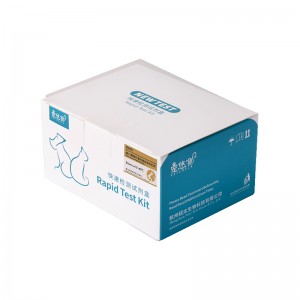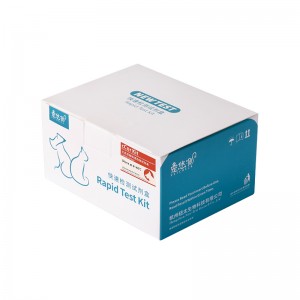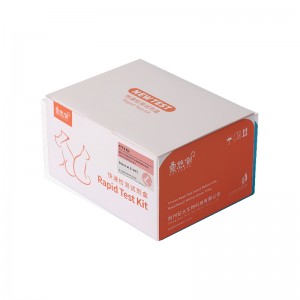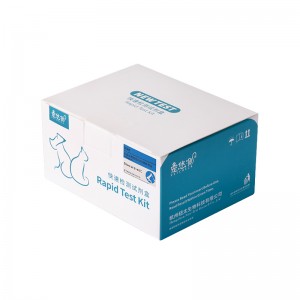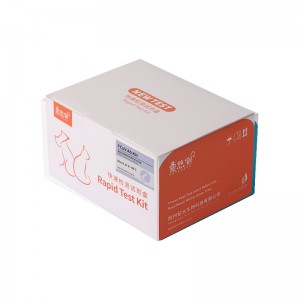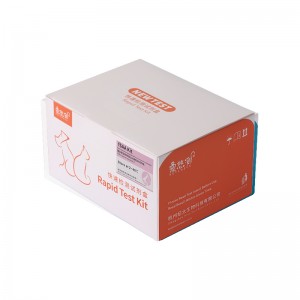欢迎访问
Canine Diarrhea Combined Detection(7-10 items)(Latex)
【 Testing purpose 】
Canine parvovirus (CPV) is the most common acute viral infectious disease in dogs with high morbidity and mortality. The virus can survive strongly in the natural environment for up to five weeks, so it is easy to infect dogs through oral contact with contaminated feces, mainly affecting the gastrointestinal tract, but may also lead to myocarditis and sudden death. Dogs of all ages are infected, but puppies are particularly infected. Clinical symptoms include fever, poor mental appetite, continuous vomiting with dysentery, blood dysentery with thick odor, dehydration, abdominal pain, etc. Death usually occurs within 3-5 days after symptoms appear.
The Canine Coronavirus (CCV) It can infect dogs of all breeds and all ages. The main route of infection is fecal-oral infection, and nasal infection is also possible. After entering the animal body, the coronavirus mostly invaded the upper 2/3 part of the villous epithelium of the small intestine, so its disease is relatively mild. The incubation period after infection is about 1-5 days, because the intestinal damage is relatively mild, so the clinical practice often only sees slight dysentery, and adult dogs or elderly dogs infected, may not appear any clinical symptoms. Dogs usually begin to recover 7-10 days after the onset of clinical symptoms, but symptoms of dysentery can last for about 4 weeks.
Canine rotavirus (CRV) belongs to the genus Rotavirus of the Reoviridae family. It mainly harms newborn dogs and causes acute infectious diseases characterized by diarrhea.
Giardia (GIA) can cause diarrhea in dogs, especially young dogs. With the increase of age and the increase of immunity, although the dogs carry the virus, they will appear asymptomatic. However, when the number of GIA reaches a certain number, diarrhea will still occur.
Helicobacterpylori (HP) is a gram-negative bacterium with strong survival ability and can survive in the strongly acidic environment of the stomach. The presence of HP may put dogs at risk for diarrhea.
Therefore, reliable and effective detection has a positive guiding role in prevention, diagnosis and treatment.
【 Detection principle 】
This product is used to quantitatively detect CPV/CCV/CRV/GIA/HP content in dog feces by fluorescence immunochromatography. The basic principle is that the nitrocellulose membrane is marked with T and C lines, and the T line is coated with antibody a that specifically recognizes the antigen. The binding pad is sprayed with another fluorescent nanomaterial labeled antibody b that can specifically recognize the antigen. The antibody in the sample binds to the nanomaterial labeled antibody b to form a complex, which then binds to the T-line antibody A to form a sandwich structure. When the excitation light is irradiated, the nanomaterial emits fluorescent signals. The intensity of the signal was positively correlated with the antigen concentration in the sample.
留下你的联系方式:
相关产品
为什么选择我们
纽太生物致力于为宠物的健康提供更多创新且有价值的检测方案不做行业的追随者,争做行业开创者

